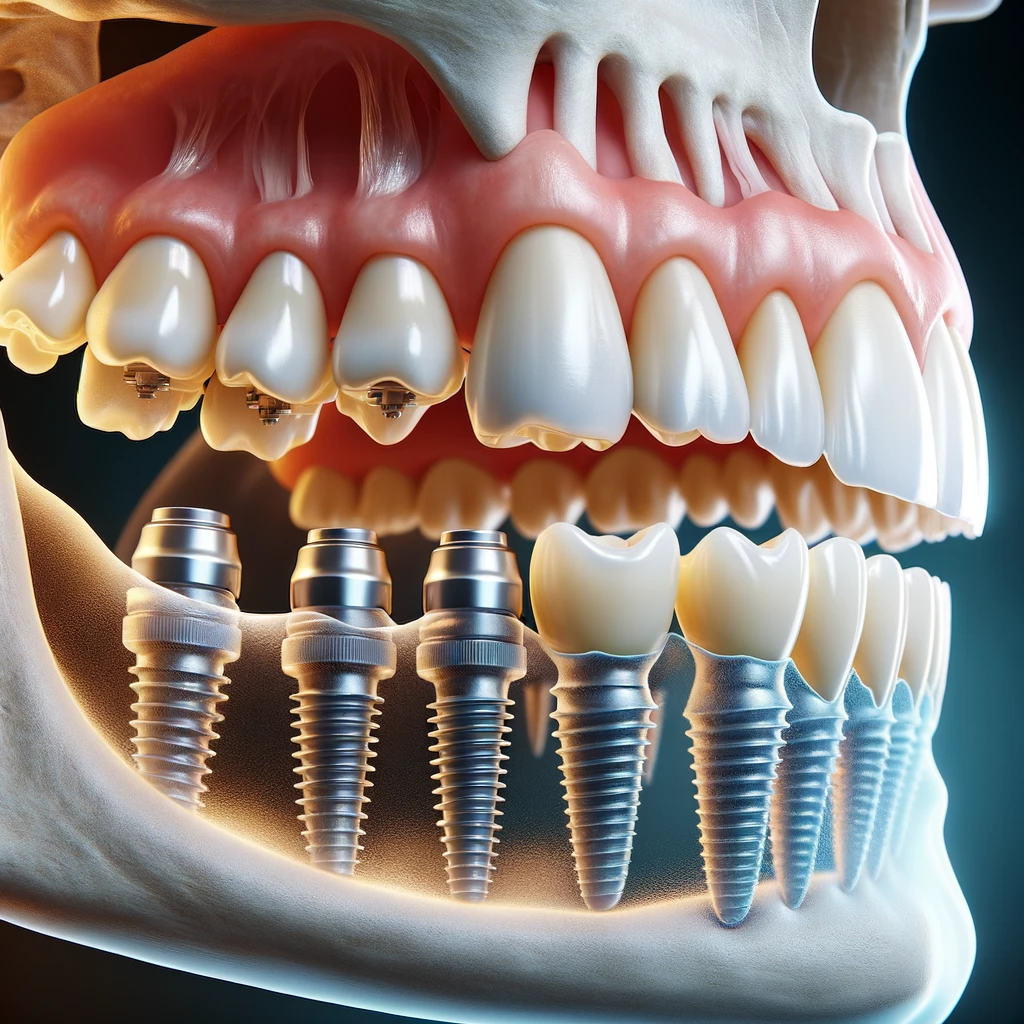Get This Report on Dental Sense
Table of ContentsThe Ultimate Guide To Dental SenseRumored Buzz on Dental Sense4 Easy Facts About Dental Sense ExplainedDental Sense Things To Know Before You Get This
are medical tools operatively implanted right into the jaw to restore an individual's ability to chew or their look. They give assistance for man-made (fake) teeth, such as crowns, bridges, or dentures. When a tooth is shed due to injury or disease, an individual can experience difficulties such as fast bone loss, defective speech, or changes to chewing patterns that cause discomfort.Oral dental implant systems contain a dental implant body and oral implant abutment and may likewise consist of an abutment addiction screw. Root canal procedure. The oral implant body is surgically inserted in the jawbone in place of the tooth's origin. The dental implant abutment is typically affixed to the dental implant body by the abutment fixation screw and extends through gum tissues right into the mouth to support the affixed synthetic teeth
(https://profile.hatena.ne.jp/dentalsense1/)Framework of The Dental Implant System selecting oral implants, speak to your dental service provider concerning the possible benefits and risks, and whether you are a prospect for the procedure. Points to think about: Your total health and wellness is an important consider establishing whether you are a great candidate for oral implants, the length of time it will take to heal, and how much time the dental implant might remain in location.
Cigarette smoking may affect the healing process and reduce the long-term success of the dental implant. The recovery procedure for the implant body might take numerous months or longer, throughout which time you typically have a momentary abutment in location of the tooth. the oral implant treatment: Very carefully adhere to the dental hygiene instructions provided to you by your dental supplier.
Not known Facts About Dental Sense
Implant failing can cause the demand for another operation to deal with or change the dental implant system. Recovers the capability to chew Restores cosmetic appearance Aids maintain the jawbone from reducing because of bone loss Preserves the health of the surrounding bone and periodontals Assists maintain nearby (close-by) teeth stable Boosts high quality of life Damage to bordering natural teeth during dental implant placement Injury to the surrounding cells throughout surgical treatment, such as sinus perforation Injury throughout surgery (for instance, fracture of bordering jawbone) Insufficient function, such as seeming like the teeth do not bite with each other usually An experience that the tooth hangs or twisting in place resulting from a joint screw loosening up Implant body failure (looseness of the implant body) due to systemic infection, which might be most likely in individuals with uncontrolled diabetes mellitus as a result of local infection in bone and gum tissues sustaining the dental implant body as a result of delayed recovery, which might be extra most likely in clients who smoke Trouble cleaning up the gum tissues around the implant, leading to poor dental hygiene Without treatment periodontal disease Post-surgical feeling numb due to nerve impingement or damages Always inform healthcare companies and imaging technicians that you have dental implants prior to any type of magnetic vibration imaging (MRI) or x-ray treatments.
FDA is not conscious of any type of damaging occasions reported for MRI or x-ray treatments with oral implants. Oral implants systems are generally constructed from materials that comply with international agreement criteria of the International Organization for Standardization (ISO) or ASTM International. These standards have details of what makes a safe product.

A dental implant is a structure that changes a missing out on tooth. With screw-like devices, the doctor inserts a dental implant right into the jawbone, and it functions as an anchor for a synthetic tooth, called a crown. A tool called a joint links the man-made tooth to the oral implant. The crown is personalized to fit the person's mouth and match the shade of their teeth.
Getting The Dental Sense To Work
Some people are not qualified for oral implant surgery. It is for oral surgeons to operate people with: severe illnessuncontrollable metabolic diseasebone or soft tissue condition or infectionIf these issues are dealt with, a person can have the surgical procedure. In, dental specialists avoid operating on people with: If individuals with any one of the above undertake dental implant surgery, there is a higher threat of the dental implant stopping working.

Oral dental implant surgical treatment is a personalized procedure. It's not the exact same for everybody. But the adhering to provides a general overview of what you can anticipate your dental expert, dental cosmetic surgeon, periodontist or prosthodontist to do: Put the implant operatively. Give you time to recover. Affix the article and final crown, bridge or denture.
Next, your specialist will very carefully put the dental implant right into your jaw. If your dental implant is near the front of your mouth, your dentist will make a momentary tooth for you to use until you recover.
Dental Sense for Beginners
During the healing phase, your jawbone should fuse to the dental implant. This process can take anywhere from 3 to 9 months.
As soon as your implant heals, your dental expert can connect the abutment (small adapter blog post) and your last reconstruction (crown, bridge or denture). This generally takes about one hour to complete and may need a 2nd small surgery. You shouldn't really feel any discomfort throughout your oral implant treatment since your company will certainly use medication to numb your gum tissues.